🐐 Goat
Important Terms, Concepts, Breeds, Housing Management
Which of the following statment is not wrong?
- Capra hircusgoat
- Family: Bovidae
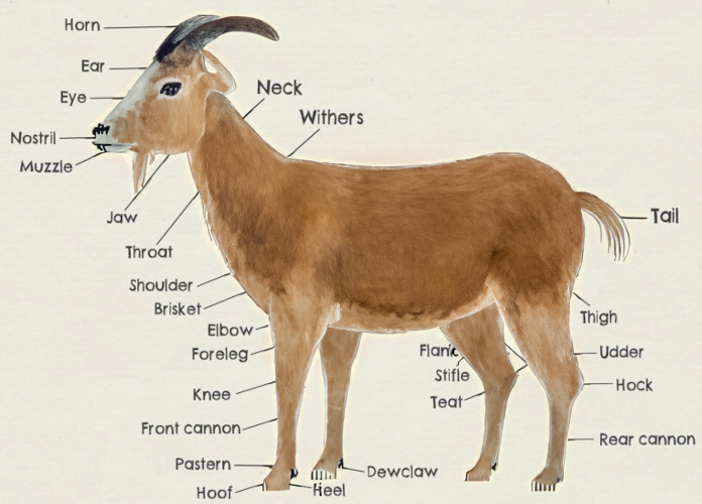
- Goats have a gestation period (pregnancy) of 150-152 days (five month) and the average birth rate for goats is 2.2 kids per year.
- Goats produce lean and juicy meats (chevon) which is preferred by all religious sects.
- Goats provide an dependable source of income to more than 40% of the rural population who live below the poverty line in India.
- Goats are mostly raised by land less labourers and marginal farmers.
- Goats are very economic to rearing therefore known as ‘Poor Man’s Cow’ in India.
- The goat milk contains lower fat percent with smaller fat globules, higher protein and lactose and rich in minerals.
- Goats generally accept a wide variety of feeds but what is acceptable to one may not be equally acceptable to the others.They prefer to select from the wide variety of feeds and vegetarians (Preferably leaves) and like fresh fodder, grains, seeds and pellets rather than the wet feeds, silages, chopped greens, soiled forages and hays.
- Goats have higher tolerance to the wide variety of otherwise undesirable phyto-chemical compounds which enable them to consume a wide range of plant species.
- In comparison with cows, then milch goats require a higher amount of TDN. Goats have the capability of consuming dry matter to the tune of 5 to 8% of its body weight. Therefore known as Enemy of vegetation.
- Being smaller in size - with larger surface area, well adapted to high temperature - arid areas.
- Semi-arid areas with sparse vegetation, bushes, shrups - steeply sloped mountainous regions cannot be suited for cattle but goat and sheep.
- High growth rate despite being slaughtered at higher numbers due to its prolificacy, short generation, regular breeding throughout \ the year, short inter kidding interval.
- Browsing: Goats are natural browsers. This means that they like to eat with their heads up, often reaching as high as they can for leaves, twigs and wooded area’s understory.
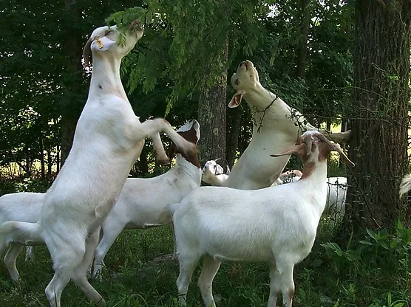
- Morocco: Fine leather is prepared from goat skin. Morocco fine leather is prepared from goat skin.

Nomenclature
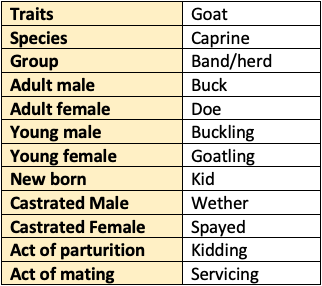
Indeginous Breeds
- In India has registered 26 goat breeds with varying potential for meat, milk and fiber production.
- Classification of Indian breeds of Goats according to their functions:
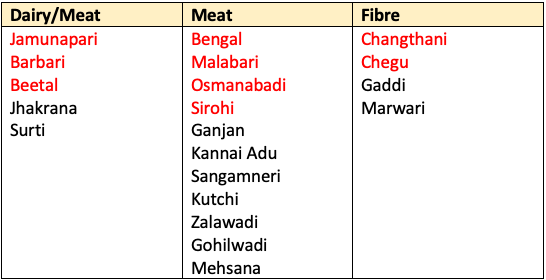
Jamnapari
- Dual Purpose Breed.
- Jamunapari breeds is native of Etawa (Uttar Pradesh).
- Biggest and Majestic goat breed in India.
- Its coat colour is white with tan or black markings at neck and ears.
- They have beard in both sexes.
- They have tuft of think and long hairs in the buttocks known as feather.
- It is largest and most elegant of the long-legged goats of India.
- It has Roman nose (hook nose) and parrot mouth appearance.
- Their horns are short and flat and horizontally twisting backward.
- It has folded
pendulated (hanging down loosely) and large earsdrooped downwards. - An adult female weighs between 45 kgs to 60 kgs, whereas an adult male ranges between 65 kgs to 80 kgs.
- Average birth weight is up to 4 kg.
- Average age at first kidding is 20-25 months.
- They have large udder and big teats and average yield is 280 kg (
highestamong indigenous) and lactation length is 274 days (longest). - Have the ability to yield 2 to 2.5 kgs of milk per day.
- The fat content of the milk ranges between 3 to 3.5%.
Barbari

- Dairy Breed (Miltch).
- Originated in the east African country of Somalia; name derived from Berbera city.
- Now common in the farms of the arid and semi-arid regions of north and north-western India. Found in Uttar Pradesh, prevalently in the Mathura, Etah, Aligarh, Agra districts, Bharatpur in Rajasthan.
- It is dwarf breed & suitable for stall feeding, therefore found in cities.
- Prolific breeder and kid twice in 12-15 months. Usually give birth two kids (
twins) in one parturition. - The average daily milk yield is 1 to 1.5 kg with a lactation period of 150 days.
Beetal
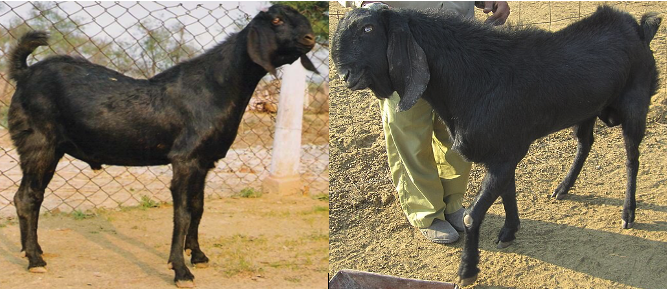
- Dual purpose breed.
- Mainly found in
Punjabstate. - This breed is evolved from Jamunapari, therefor it’s physical traits are almost similar to it. But it is smaller than Jamnapari.
- Coat Colour is predominantly black, red, tan or black, heavily spotted on white also found.
- An adult male ranges between 50 kgs to 70 kgs.
- Age at first kidding 20-22 months.
- Milk yield 1-2 kgs of milk per day.
Sirohi
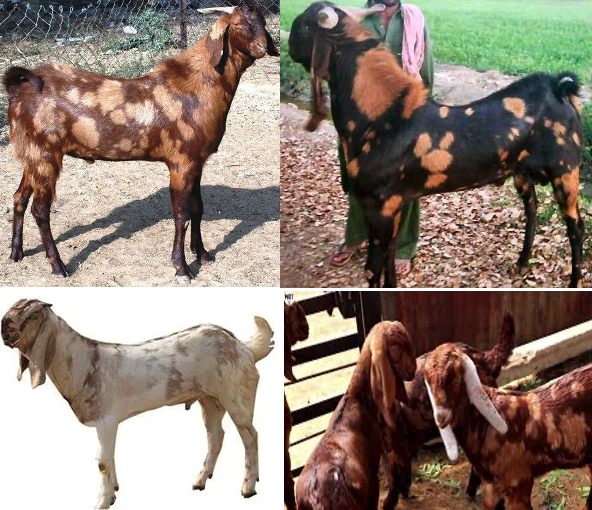
- This breed is mainly reared for
meatand milk yield is very small. - Native of Sirohi district of Rajasthan, hence the name.
- Coat colour is brown, white, and admixture of colours in typical patches.
- Short and coarse hairs on body.
Black Bengal
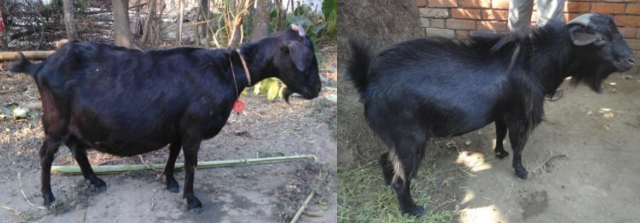
- This breed is known for its
excellent quality of meat. - Animals are predominantly black and found in eastern India and northern parts of Bangladesh (Hence named as Black Bengal)
- Animal are small and compact i.e. Dwarf in body size
- Its meat is tender and has a good taste.
- Prolific breed and multiple births are common, twins or triplets are born in 12-14 months old doe.
- It’s skin is great demand for high class shoe-making.
Osmanabadi
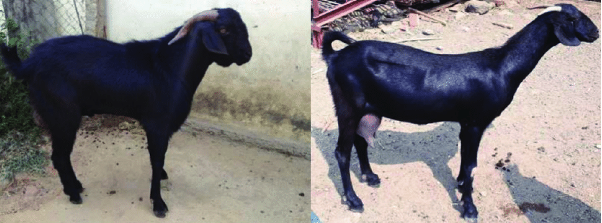
- Reared for
meat(good quality) - Colour is predominantly black; white, brown and spotted occur.
Marwari

- Marwar region of Rajasthan.
- Predominantly jet black colour.
- It is disease resistant breed.
- The average daily milk yield is poor, about 0.8 kg.
- It is good for meat.
Tellicherry
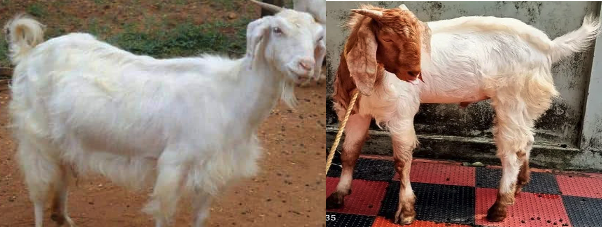
- Tellicherry breeds are also called as
Malabari breeds. - These types of breeds are found mostly in the state of Kerala.
- This breed is reared mainly for meat purpose and their skin is popular with the tanning insustry.
Changthangi

- Native of Ladakh.
- Breed is also known as
Pashminadue the ability of the breed produce longer and finer pashmina on the sides of shoulders. - Average production of pashmina is 215 gm. It is used for making Kashmir “Rug or Shawl” of high quality.
- This breed is primarily raised for the production of super-fine cashmere wool. They are largely reared by a tribe of nomadic people called the ‘Changpa’.
- This cashmere variety of wool is considered to be the ‘world’s finest cashmere’.
- The fiber thickness measures no more than 12-15 microns.
- Once weaved, the cashmere wool is known as the
Pashmina, and is used to make the popular Pashmina Shawls of Kashmir. These shawls or rugs (wrappers) are exported throughout the world at a very expensive rate. - It is a fine type of wool used in winter clothes mainly obtained from goat Changthangi, Chegu etc.
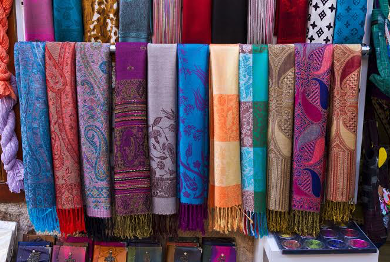
Chegu
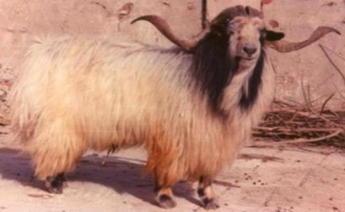
- Native of Himachal Pradesh.
- The breed is marked for
Pashmina production. - Average yearly production is about 120 grams with 5.9 cm fibre length having 10-12 micron diameters.
Exotic Breeds
Saanen

- Native of Switzerland.
- Colour is white or light cream.
- Presence of beard in both the sexes is the characteristic feature.
- AKA
Queen of Goats.
Anglo-Nubian
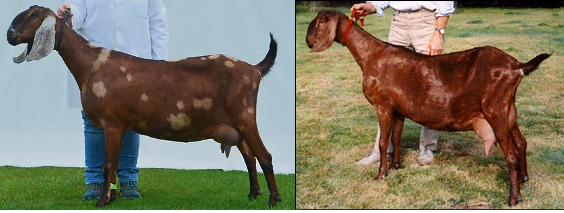
- Native of England.
- Exotic Cross breed: Jamunapari x Nubian (Nubia of North Eastern Africa)
- AKA
Jersey Cow. - Peak yield goes upto 6.5 kg/day.
- It is a big animal with a fine skin and glossy coat, pendulous ears, and Roman nose.
Alpine

- Native of Europe.
- Milk breed.
- Fat of 3-4%.
Toggenburg
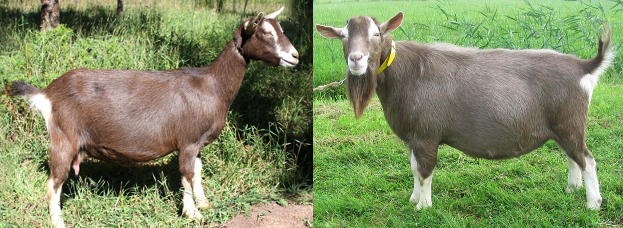
- Native of Switzerland.
- Chocolate colour
- Hornless breed, miltch breed.
- Skin is very soft and pliable.
- Fat content of milk 3-4 percent.
Angora
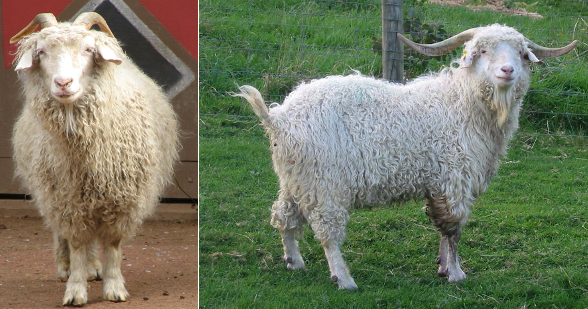
- Native of Turkey or Asia Minor.
- Its hairs produce a superior quality fibre called
mohair. This soft white wool is in great demand for clothing.
Boer
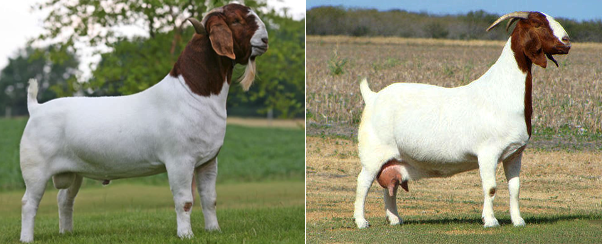
- It is a South African breed
- It is mainly reared for good quality meat.
Management
- Feeding of Lambs and kids: Lambs and kids will suckle from the mother until they are 4 months old but they will start to show an interest in green plants from 3 weeks of age.
- ‘Creep Feeding’, the practice of offering grain to lambs/kids that have not yet been weaned, can help the eventual transition off of milk to a post-weaning diet and can reduce stress at weaning time.
Housing

Diseases in Goat
PPR
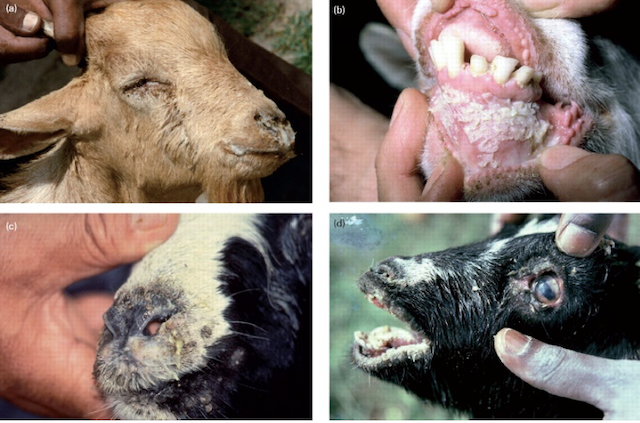
Peste Des Petits Ruminants(PPR)- The PPR is most important infectious disease of small ruminants caused by a
virusand is known as sheep and goat plague. - It causes death in more than 50 % of the affected animals due to high fever, pneumonia, oculo-nasaldischarges, diarrhoea and dehydration.
Tuberculosis
- Goats are resistant to tuberculosis.
References
- G.C. Banerjee: A Textbook of Animal Husbandry
- https://www.breedslist.com/
- https://nbagr.icar.gov.in/
- https://agritech.tnau.ac.in
- Wikipedia
Which of the following statment is not wrong?
- Capra hircusgoat
- Family: Bovidae

- Goats have a gestation period (pregnancy) of 150-152 days (five month) and the average birth rate for goats is 2.2 kids per year.
- Goats produce lean and juicy meats (chevon) which is preferred by all religious sects.
- Goats provide an dependable source of income to more than 40% of the rural population who live below the poverty line in India.
- Goats are mostly raised by land less labourers and marginal farmers.
- Goats are very economic to rearing therefore known as ‘Poor Man’s Cow’ in India.
- The goat milk contains lower fat percent with smaller fat globules, higher protein and lactose and rich in minerals.
- Goats generally accept a wide variety of feeds but what is acceptable to one may not be equally …
Become Successful With AgriDots
Learn the essential skills for getting a seat in the Exam with
🦄 You are a pro member!
Only use this page if purchasing a gift or enterprise account
Plan
Rs
- Unlimited access to PRO courses
- Quizzes with hand-picked meme prizes
- Invite to private Discord chat
- Free Sticker emailed
Lifetime
Rs
1,499
once
- All PRO-tier benefits
- Single payment, lifetime access
- 4,200 bonus xp points
- Next Level
T-shirt shipped worldwide

Yo! You just found a 20% discount using 👉 EASTEREGG

High-quality fitted cotton shirt produced by Next Level Apparel